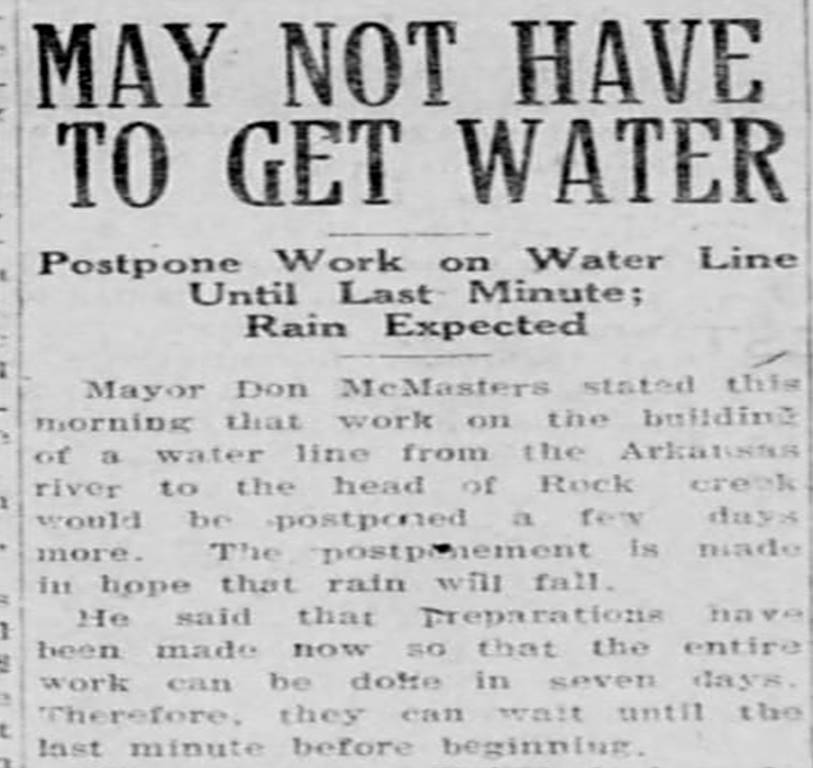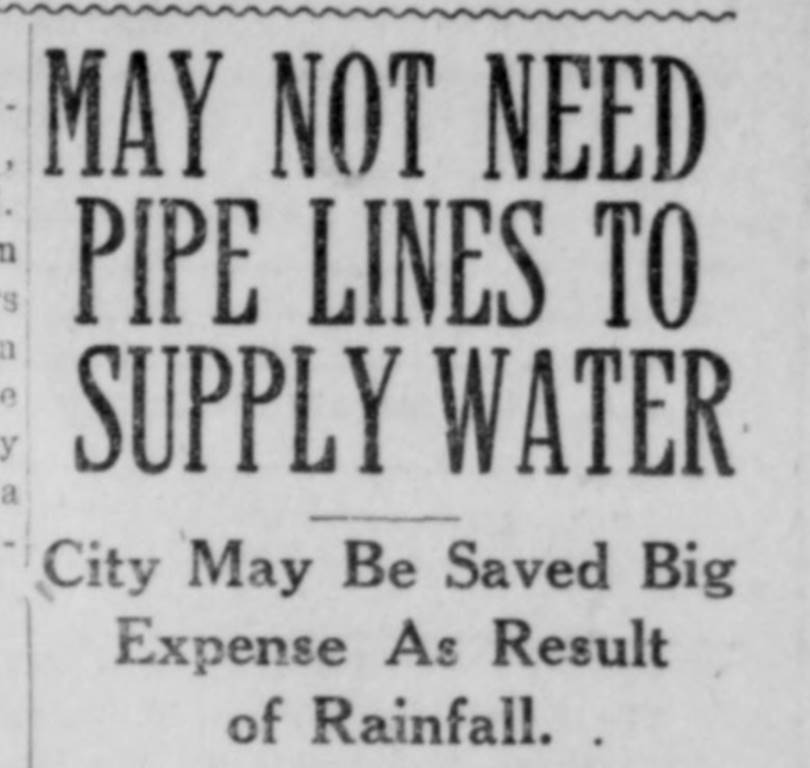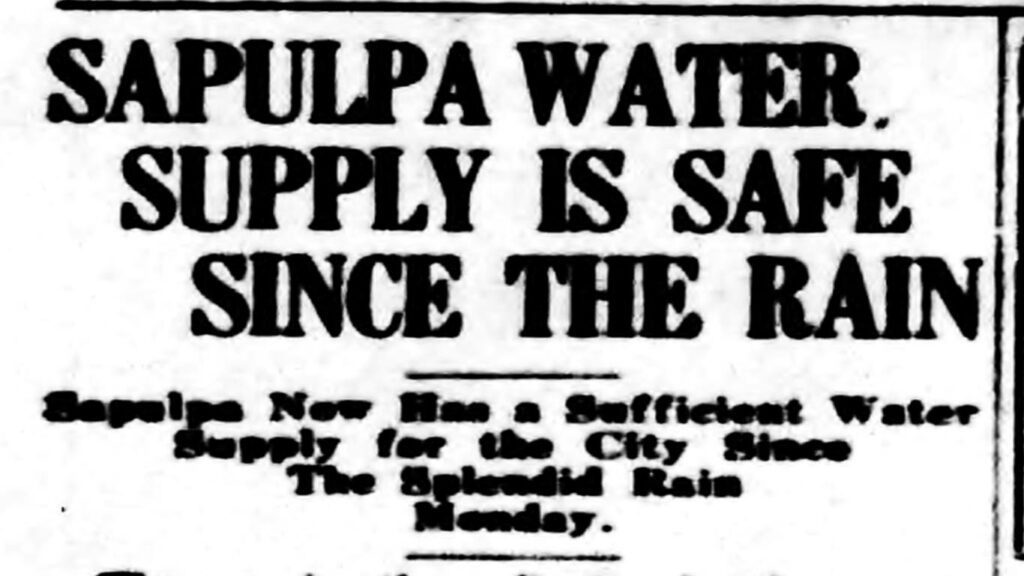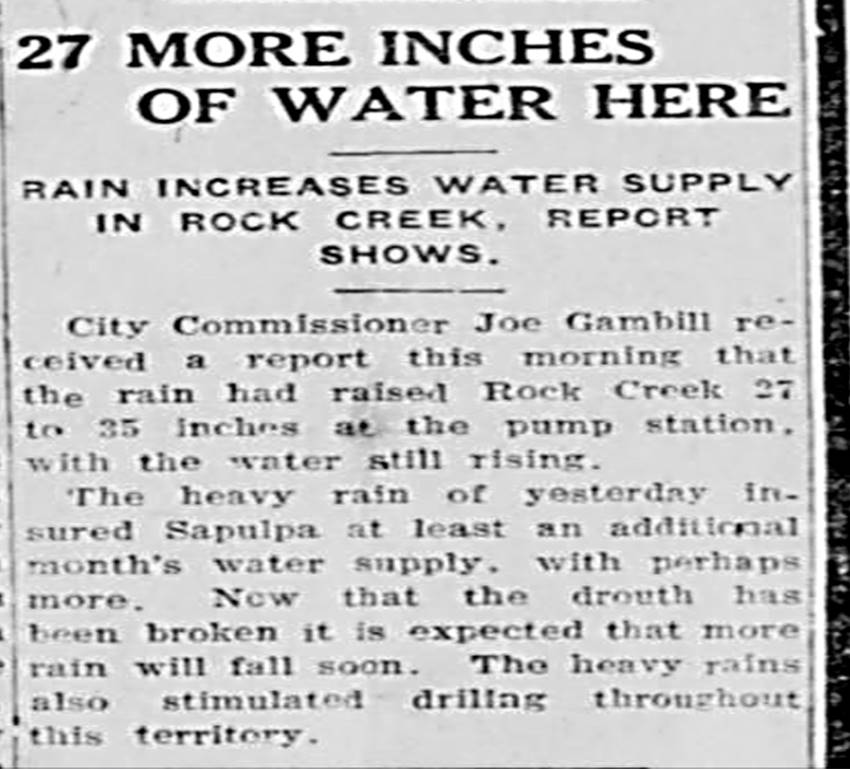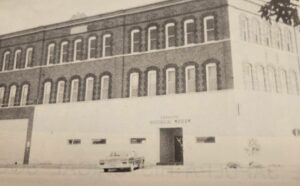Rachel Whitney
Curator, Sapulpa Historical Museum
Sapulpa had been experiencing a drought for some time in late 1921 and early 1922. The water supply was very low for the city, and the City Commissioners had begun to make arrangements to lay an eight-inch pipeline from the Arkansas River to the headwaters of Rock Creek.
On January 6th, it was announced: “Unless a heavy rain falls before Monday [January 9, 1922], the city of Sapulpa will be forced to spend approximately $15,000 to secure an additional water supply from the Arkansas River.*”
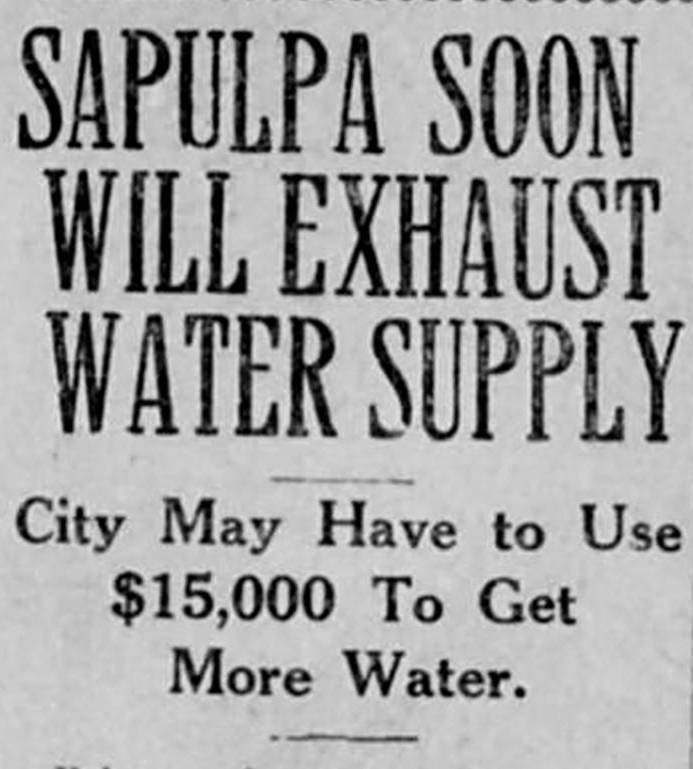
*Note: in 1922, $15,000 is about $230,000 with today’s inflation.
A 150 horsepower electric pump would be installed to pump the water. Charles Page, of Sand Springs, had agreed to construct an electric line to the pump site. “The City Commissioners have put off ordering the materials until the last minute, while hoping for rain.”
On January 9th, 1922, Mayor Don McMasters stated that even though the initial cost was estimated at $15,000, the final cost would be much less. The pump and motor were borrowed from Oklahoma City and would be returned. Additionally, the pipe could be returned at a 10% discount and the final cost would be mainly labor; the final cost sat around $6,000. However, he still delayed the decision to build the pipe in hopes for rain.
“The water situation has been causing Commissioner Joe Gambill uneasiness for some time. He has seen the big dam lake sink lower and lower. Now only about sixty days supply is left.”
Commissioner Gambill stated “We are preparing to get this Arkansas River supply mainly for fire protection [and toilet flushing].” The river’s water was unsuitable for drinking water, as it was too salty. “After this pipeline is installed, we can continue to use the big dam lake without fear until the supply is exhausted. Then, if no rain has fallen, we will start using the Arkansas River water.”
Mayor McMasters “said that preparations have been made now so that the entire work can be done in seven days. Therefore, they can wait until the last minute before beginning.”
“At one point where the Arkansas makes a pronounced bend it is only two and a half miles to the Rock Creek headwaters. The eight-inch pipeline will be laid across the intervening space. The line will start from Arkansas about five miles above Sand Springs.”
Commissioner Gambill further stated “the water will be so handled that the Arkansas water and the big dam water can be turned into the city mains alternately without mixing the two if necessary.”
Furthermore, “this is the first time the big dam lake has ever been so low. The extended dry spell has been of unusual length.”
“In the meantime, the entire city of Sapulpa is now hoping for rain as fervently as ever did a farmer with a dying crop. A good rain will save the city thousands of dollars.”
That night and the following morning, rain fell upon the city. On January 10, 1922, it was announced: “may not need pipelines to supply water; city may be saved [as] result of rainfall.”
“A rain worth thousands of dollars to Sapulpa fell over the city and vicinity beginning about 10 o’clock last night. The rain drops, which look like silver dollars to citizens, were still coming down.”
Mayor McMasters stated “[due to the amount and strength of the rain fallen] the project could be set back thirty days; it had brought Rock Creek up about eight inches.”
The County Democrat News reported “the water supply for Sapulpa is not now a troublesome question.”
More on the state drought: “The rain was well distributed over the state. John A. Whitehurst, President of the State Board of Agriculture, reports that by the recent rain the wheat crop of Oklahoma is saved, that the wheat outlook for Oklahoma is today better than for two months, and with supplemented rains Oklahoma should produce a good wheat yield.”
Whitehurst further stated that on the last official survey “the crop on December 1 [1921] was only 54% of normal [growing condition]. The annual wheat crop, valued at approximately $40,000,000 could not long have held out without rain, and while it is difficult to estimate in dollars the value of the rain, it clearly means several million dollars more than would have been the case if the rain had been delayed much longer.” Additionally, oil drilling had been closed due to the water shortage, but many of the fields resumed drilling.
City Commissioner Joe Gambill also reported that at the pump station of Rock Creek, 27 to 35 inches of water had risen, and continued to rise. The amount from the heavy rains was credited to another month or two in water supply. It was then believed that the drought had been broken, and that the city of Sapulpa’s reservoirs would soon be full enough to ensure a lasting water supply.


